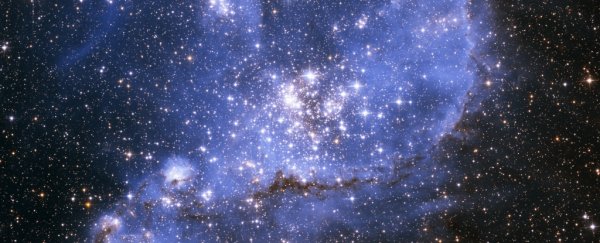Interstellar asteroid 'Oumuamua raised an interesting possibility: if objects could enter our Solar System from somewhere out beyond its reaches, maybe it's happened before. New research has found that that is indeed the case - and that interstellar object has been living here a long time.
It's the first known permanent fixture of our Solar System that wasn't formed here.
The asteroid called 2015 BZ509, and it's been a bit of a puzzle ever since its detection in 2014. As it turns out, that's because it's one-of-a-kind.
Most objects in the Solar System - including all of the planets - orbit the Sun in the same direction: anticlockwise, or prograde. Of the thousands and thousands of asteroids and comets and planetesimals and planets and moons, only 95 are known to orbit the Sun clockwise, or retrograde. This makes them pretty rare.
Not only does 2015 BZ509 (affectionately nicknamed Bee-Zed by some astronomers) orbit the Sun clockwise, it's the only known retrograde object to share an orbit with a planet.
Bee-Zed is co-orbital with Jupiter on a 1:1 resonance, which means it orbits the Sun at more or less the same speed as the planet - just in the opposite direction.
Jupiter shares its orbital space with around 6,000 known asteroids, most of which travel in the same direction. There are a few other retrograde asteroids, but none with the co-orbital resonance the planet shares with Bee-Zed.
And its delicately balanced gravitational relationship with both the Sun and Jupiter allows it to maintain its eccentric orbit, which it has been in for at least a million years, according to a paper released last year.
The two bodies pass within just 176 million kilometres (109 million miles) of each other twice an orbit; Jupiter tugs on the asteroid, which prevents it from tumbling Sun-ward; and the Sun tugs it back, preventing it from falling into Jupiter.
"How the asteroid came to move in this way while sharing Jupiter's orbit has until now been a mystery," explained astronomer and cosmologist Fathi Namouni of the Observatoire de la Côte d'Azur in France.
"If 2015 BZ509 were a native of our system, it should have had the same original direction as all of the other planets and asteroids, inherited from the cloud of gas and dust that formed them."
Namouni and astronomer Helena Morais of the Universidade Estadual Paulista, Brazil, ran computer simulations to see how far back Bee-Zed's orbital stability could be traced.
They found that it went all the way back to the birth of the Solar System, 4.5 billion years ago - and that, all else remaining as is (it won't, because the Sun is going to die), it could maintain that orbit for 43 billion years.
 Images that establish Bee-Zed's retrograde co-orbital nature. (C. Veillet/Large Binocular Telescope Observatory)
Images that establish Bee-Zed's retrograde co-orbital nature. (C. Veillet/Large Binocular Telescope Observatory)
"Asteroid immigration from other star systems occurs because the Sun initially formed in a tightly-packed star cluster, where every star had its own system of planets and asteroids," Morais said.
"The close proximity of the stars, aided by the gravitational forces of the planets, help these systems attract, remove and capture asteroids from one another."
If Bee-Zed always orbited this way, then it could not have formed alongside all the objects with a prograde orbit. This means that it had to have come from elsewhere.
So, are other retrograde objects in the Solar System also immigrants from other star systems? Not necessarily.
When Wiegert and team found that Bee-Zed's orbit had been stable for at least a million years, that was two orders of magnitude longer than other retrograde resonant asteroids that have been temporarily captured by Jupiter and Saturn.
This means that Bee-Zed's origin may be different from most retrograde asteroids.
But it also may mean that there are other interstellar asteroids currently present in the Solar System.
Identifying these, and studying Bee-Zed in greater detail, could help provide clues about the early Solar System, as far back as the stellar nursery in which our Sun was born.
The research has been published in the journal Monthly Notices of the Royal Astronomical Society.
